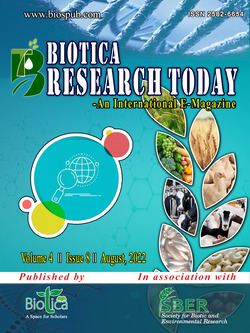
Vertical Farming: Feeding the Next Generation
Koushik Mondal*
Dept. of Agronomy, Palli-Siksha Bhavana (Institute of Agriculture), Visva-Bharati, Sriniketan, West Bengal (731 236), India
Anusree Paul
Dept. of Agronomy, Bidhan Chandra Krishi Viswavidyalaya, Mohanpur, Nadia, West Bengal (741 252), India
DOI: NIL
Keywords: Food security, Hydroponics, Urbanization, Vertical farming
Abstract
Pressure on farmland is increasing with the rising global population. Per capita land size is decreasing rapidly due to the increasing population, climate change, and urbanization. Therefore, policymakers are looking for a better alternative opportunity to achieve the goals of sustaining and feeding the burgeoning population. As a result, attention is gradually shifting to vertical farming approaches which can be an effective effort to obtain higher productivity. Vertical farming is associated with new opportunities for proper resource use efficiency, precise execution processes and networks; modern farming technology includes new forms of food supply.
Downloads
not found
Reference
Benke, K., Tomkins, B., 2017. Future food-production systems: Vertical farming and controlled-environment agriculture. Sustainability: Science, Practical and Policy 13, 13-26.
Conforti, P., 2011. Looking ahead in the world and agriculture: Perspective to 2050. Food and Agriculture Organization of the United Nation. p. 12.
Lehman, R.M., Cambardella, C.A., Stott, D.E., Acosta-Martinez, V., Manter, D.K., Buyer, J.S., 2015. Understanding and enhancing soil biological health: the solution for reversing soil degradation. Sustainability 7, 988-1027.
